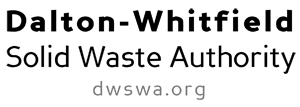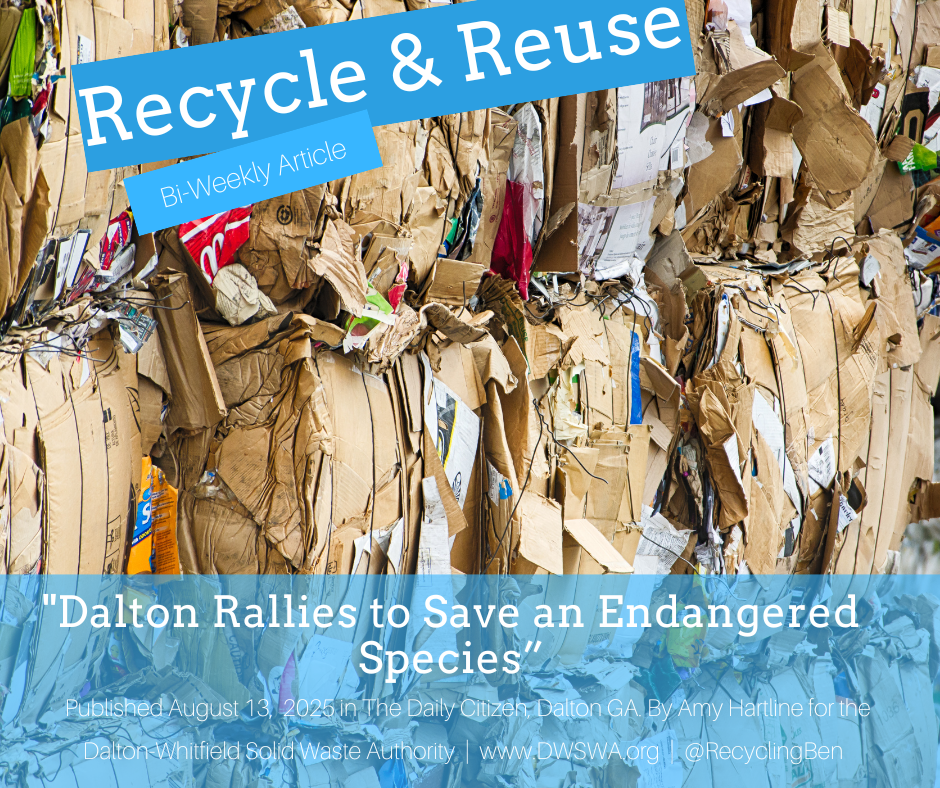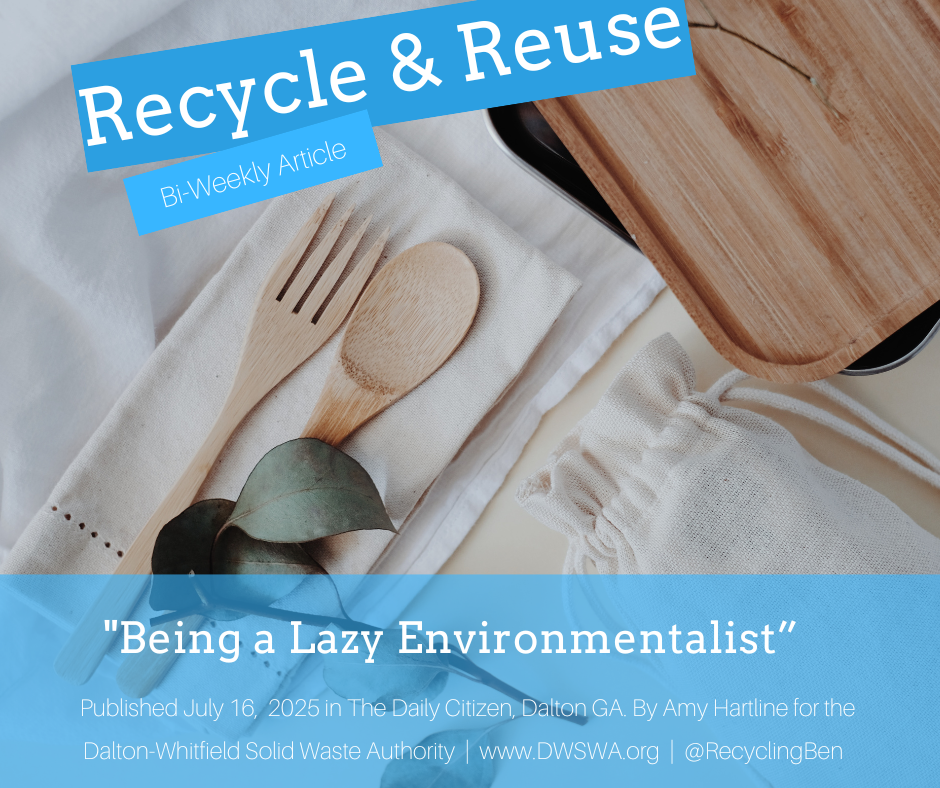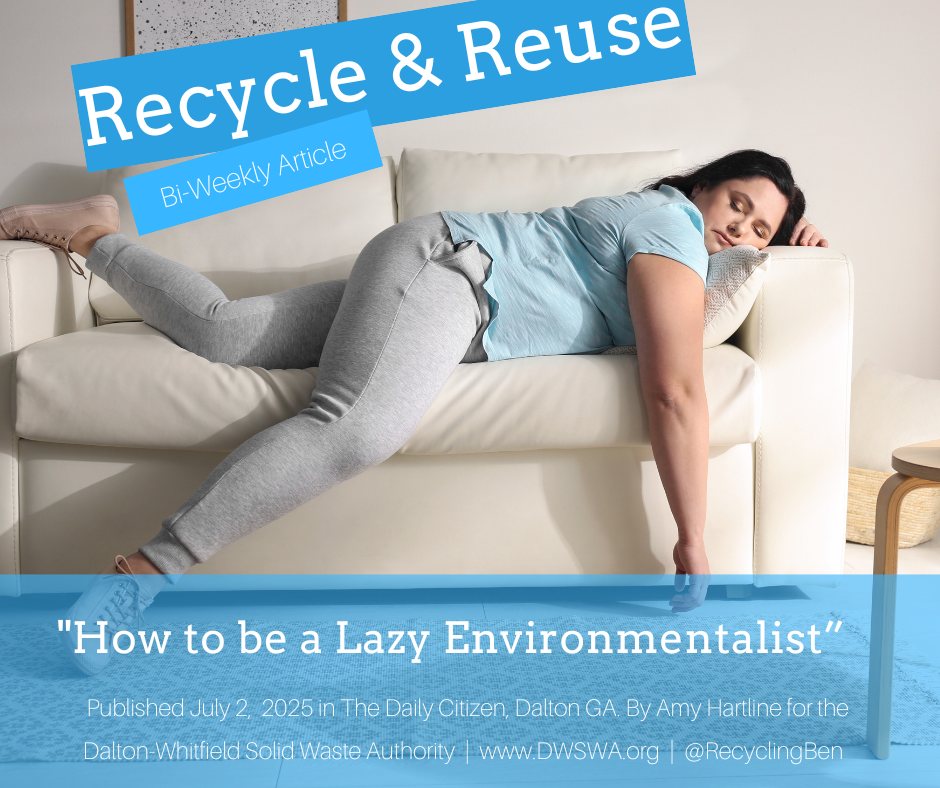Is Recycling Cardboard Worth It?
/Having piled up boxes near the door is a common sight at many houses today. As online shopping and home delivery increase, cardboard use continues to climb. Luckily, this is one of the easiest materials for us to recycle and has great benefits for our planet when we do.
According to the American Forest and Paper Association, the United States recycled more than 33 million tons of cardboard in 2024, with a recycling rate close to three-quarters of cardboard produced. Almost every product is shipped in a corrugated cardboard box before it reaches shelves or doorsteps, which leaves households and businesses with a steady stream of boxes to deal with. They are a bulky material so you don’t want them filling up space in your trash bags which makes them the perfect material for recycling.
Because cardboard is strong, uniform, and easy to transport, it can be collected in large volumes and quickly turned into new products. Cardboard recycled in Dalton for example, may end up as new cardboard cores, moving boxes, or the brown fiberboard sheets used in furniture packaging. What it becomes depends on demand at the mill when it is processed.
While cardboard recycling is fairly straightforward, there are still items that cause confusion. The simplest way to tell if a box can be recycled is to check if it is corrugated, which means it has a wavy layer sandwiched between two flat sheets. Most delivery boxes fit this category and can be recycled. On the other hand, wax-coated produce boxes cannot. The wax contamination makes the fibers too difficult to recover.
Pizza boxes are one of the more confusing cardboard items, but thanks to some innovations in the recycling world, we can now recycle all of the pizza box straight into your blue bin. You no longer have to tear the top off, you just have to make sure there isn’t any leftover pizza in there! The grease stains on the boxes are now okay.
Smaller attachments such as tape or shipping labels and staples do not need to be removed. Many people believe these must be peeled off, but the recycling process screens out small contaminants. As long as the box is mostly clean and flattened, it can be recycled without issue.
Recycled cardboard goes through a unique journey before returning as something new. After being collected in Dalton, cardboard is baled together and shipped to a mill. There, the cardboard is shredded and mixed with water to form a pulp. Contaminants like tape and labels are filtered out. Once the fibers are clean, the pulp is pressed and dried into huge sheets on rolls that can be cut and shaped into new boxes or packaging material. From there, it enters the same supply chain as cardboard made from raw trees.
So why recycle if it goes through the same steps as new cardboard? The difference comes at the very beginning of the process. Recycling one ton of cardboard saves nine to seventeen trees, conserves about seven thousand gallons of water, and save around 400 gallons of oil and other fossil fuels. The production of recycled cardboard also uses about seventy five percent less energy than creating cardboard from fresh pulp. This means fewer chemicals, less pollution, and far less waste sent to landfills.
Even if you are not someone who usually recycles, making sure your cardboard boxes end up in the right bin is one of the easiest ways to make a difference. That could mean flattening delivery boxes and putting them out with curbside recycling, or bringing a carload of boxes to the nearest convenience center after a move. Giving cardboard a second life through recycling helps conserve resources and keeps our community cleaner.
Amy Hartline is the recycling and education program coordinator for the Dalton-Whitfield Solid Waste Authority. Have a recycling question? Contact her at (706) 278-5001 or ahartline@dwswa.org.































